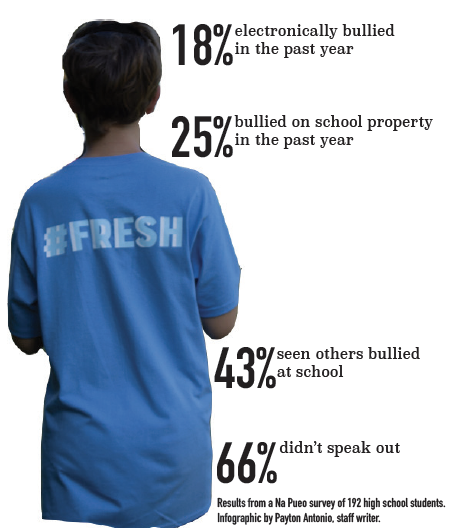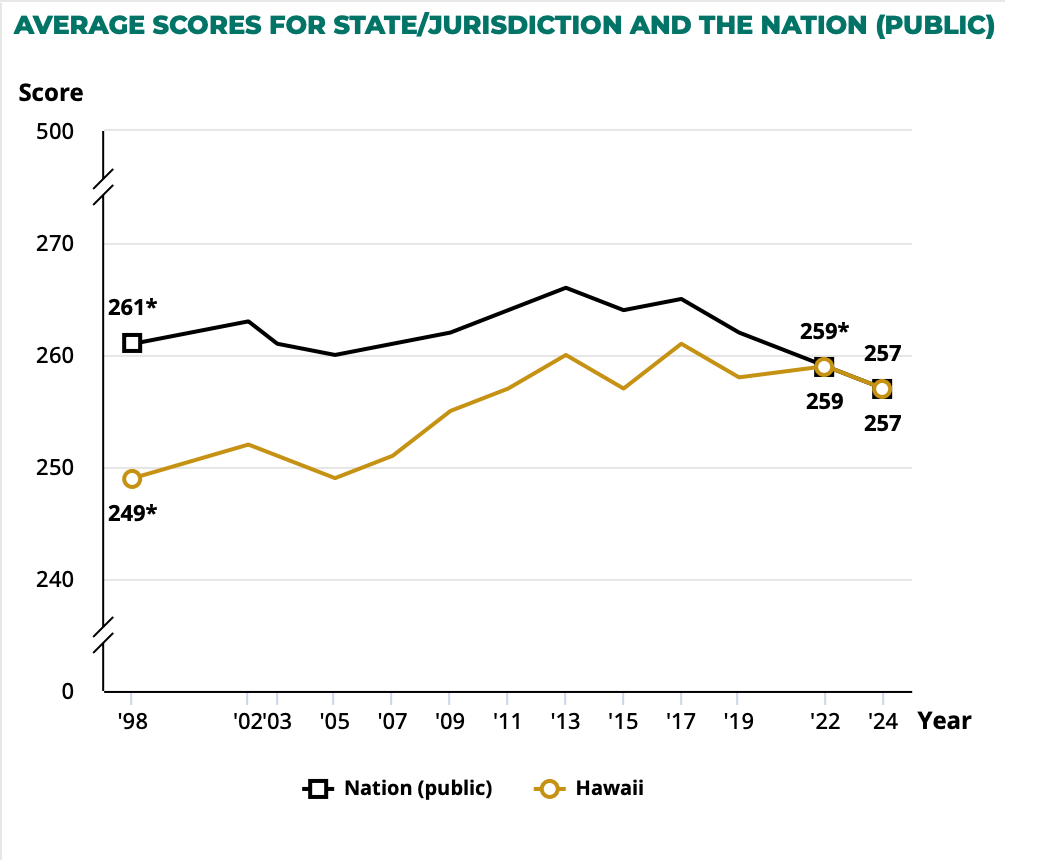Bullying: Students experience intimidation on campus and in social media, according to Na Pueo survey

A Na Pueo survey of 192 students showed bullying could be a problem on the Mid-Pacific Campus. Infographic by Payton Antonio, staff writer.
December 10, 2018
On the surface, bullying may not seem like a problem on the Mid-Pacific campus. However, it could be a bigger issue than students or administrators realize, according to a recent Na Pueo survey of 192 high school students.
The survey shows bullying is more common on the Mid-Pacific campus than it is statewide. According to the survey, 43 percent of high school students said they have seen bullying happen on campus in the past year.
“It is a very prevalent problem on campus. It’s just that adults may not know about a majority of it because kids on campus are afraid to report it,” said junior Kennedy Flores.
About 25 percent of Mid-Pacific students said they’ve been bullied on the school campus in the past year, according to the survey. Statewide, only 18 percent of students reported being bullied, according to data from the Centers for Disease Control and Prevention. About 18 percent of Mid-Pacific students reported experiencing electronic bullying, compared to 14 percent statewide.
Jessie Mitchell, a counselor with the Hawaii Center for Children and Families (HCCF) team on campus, said bullying can be multifaceted.
“For every case of bullying there are many contributing factors, to stop bullying we need to personalize the interventions to address the specific combination of factors, and that takes time,” she said.
Jennifer Grems, assistant principal for student life, said she was “surprised” by the Na Pueo results.
“I think it would be important as a community to better define what bullying is and for us to better support our students and help them feel more comfortable reporting bullying to a trusted adult or counselor,” she said.
Senior Katherine Ganel said verbal bullying is more common on campus than physical bullying.
Survey respondents students said bullying happens because students feel insecure.
“I think people might bully other people because they might feel insecure about themselves or they might be jealous of that person,” one survey respondent said.
About 67 percent of students who have seen bullying happening said they didn’t speak out about it or report it to school administrators.
Freshman Iris Park said people may not defend others that are being bullied because they don’t want to be bullied themselves.
“They don’t want to get in trouble or be the one getting bullied later,” said Park.
It can often be hard for students to differentiate light-hearted teasing as opposed to actual insults, said students.
“They think it’s fun and games and then don’t realize when they take it too far,” said one survey respondent.
However, others said they haven’t see bullying as a prevalent problem on campus. According to the survey, 57 percent of students haven’t seen others being bullied.
“I haven’t seen anyone bully anyone else,” said senior Amber Chun.






